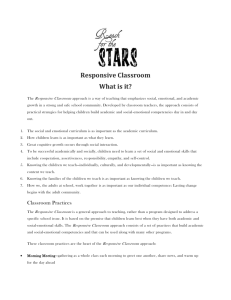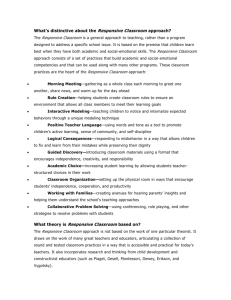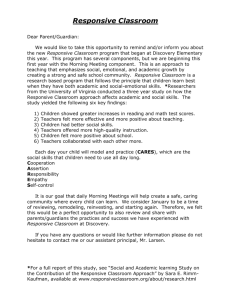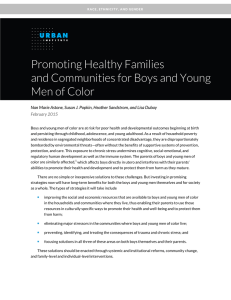Sociology 101 - ContemporaryissuesatRutgers
advertisement
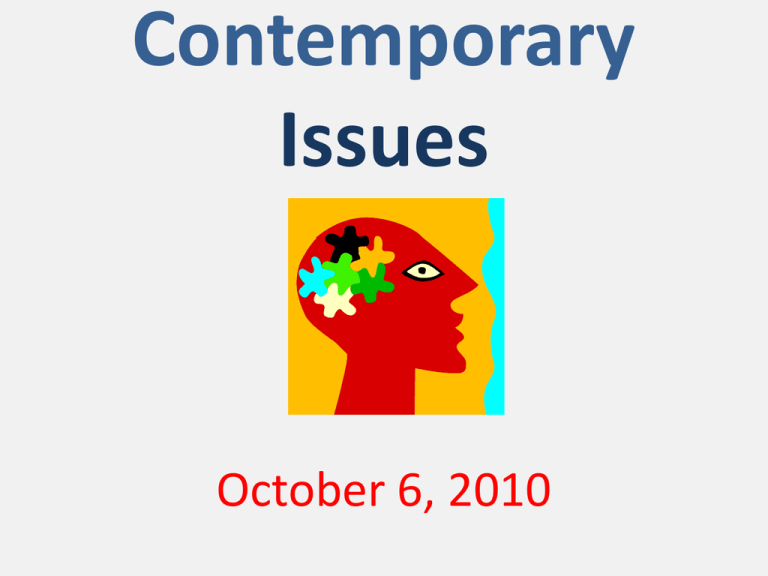
Contemporary Issues October 6, 2010 Web-Quest • What are the standards? (www.njcccs.org) • What must the activities include? (Bloom’s Taxonomy) Lesson Plan – identify the levels of Bloom’s. What should be included/excluded? Word Press • Wordpress.com Tutorial • Step by Step how to word press • Quick Overview Differences Between Boys and Girls • Differences between genders • Tale of two brains Chapter Two Students • Compare/Contrast (Venn Diagram) – Behaviors of bullying by girls vs. boys Respond to the following • Respond to the following: – Boys will be boys – A little teasing makes you tougher Programs: 1. PBSIS 2. Challenge Day (MTV): “If you knew me…” 3. Character Education Curriculum PBSIS • New Jersey Positive Behavior Support in Schools (NJPBSIS) is a partnership between the New Jersey State Department of Education, Office of Special Education Program, State Improvement Grant and the Elizabeth M. Boggs Center on Developmental Disabilities, Pediatrics Department at UMDNJRobert Wood Johnson Medical School. The goals of the NJPBSIS initiative is to increase the capacity of local school districts to develop programs and intervention strategies that reduce occurrences of discipline and behavior problems and subsequently increase student achievement and the inclusion of students with disabilities engaging in challenging behaviors within general education programs. Collaborating school buildings send a building team of eight members to participate in six days of center-based training in conjunction with .5 day a month of on-site technical assistance. Training and technical assistance activities are designed to assist local school district to develop the capacity to: • • • • • Conduct school wide self assessments of behavior problems and patterns Design and implement effective school and class wide interventions Design environments that encourage prosocial behaviors Use data based decision making to evaluate and modify programs and interventions Assess, design, and implement interventions for students who engage in chronic patterns of problem behavior Character Education What is Character Education? As defined by Dr. Thomas Lickona, character education is the deliberate effort to develop virtues that are good for the individual and good for society. The objective goodness of virtues is based on the fact that they: Affirm our human dignity – – – – Promote the well-being and happiness of the individual Serve the common good Define our rights and obligations Meet the classical ethical tests of reversibility (Would you want to be treated this way?) and universalizability (Would you want all persons to act this way in a similar situation?). Challenge Day our vision • Our vision is that every child lives in a world where they feel safe, loved and celebrated. our mission • The Challenge Day mission is to provide youth and their communities with experiential programs that demonstrate the possibility of love and connection through the celebration of diversity, truth, and full expression. Responsive Classroom The Responsive Classroom is an approach to elementary teaching that emphasizes social, emotional, and academic growth in a strong and safe school community. The goal is to enable optimal student learning. Created by classroom teachers and backed by evidence from independent research, the Responsive Classroom approach is based on the premise that children learn best when they have both academic and social-emotional skills. The approach therefore consists of classroom and schoolwide practices for deliberately helping children build academic and social-emotional competencies. Homework for next week: Read: Classroom Management Pamphlet “Students” – Chapter Two (in Ryan) Respond to wordpress.com blog. Work on technology essay report: 3 resources minimum Average 5 pages Due October 13th
